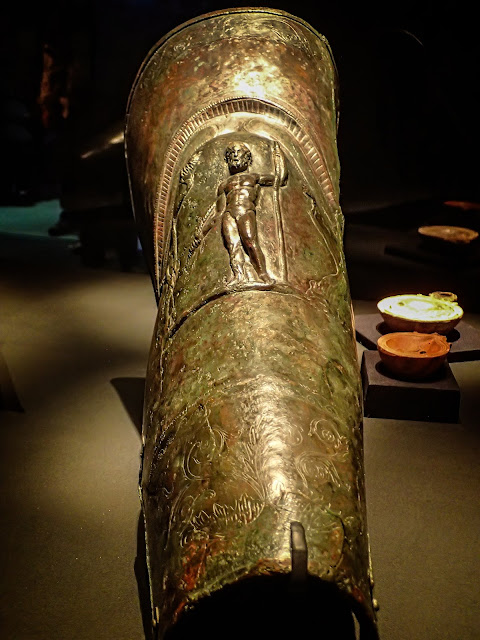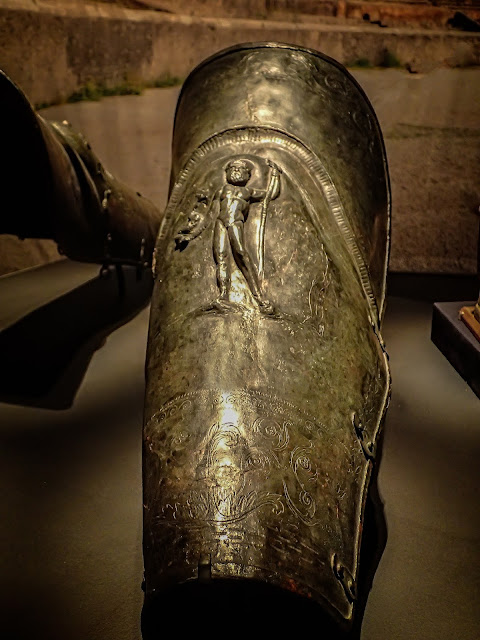 |
| Second century CE mosaic of a bull and his victims condemned to damnatio ad bestias 2nd century CE from Leptis Magna, Libya courtesy of Wikimedia Commons contributor Testus. |
The exact purpose of the early damnatio ad bestias is not known and might have been a religious sacrifice rather than a legal punishment, especially in the regions where lions existed naturally and were revered by the population, such as Africa, India and other parts of Asia. For example, Egyptian mythology had a chimeric Underworld demon, Ammit, who devoured the souls of exceptionally sinful humans, as well as other lion-like deities, such as Sekhmet, who, according to legend, almost devoured all of humanity soon after her birth. There are also accounts of feeding lions and crocodiles with humans, both dead and alive, in Ancient Egypt and Libya.
Similar condemnations are described by historians of Alexander's campaigns in Central Asia. A Macedonian named Lysimachus, who spoke before Alexander for a person condemned to death, was himself thrown to a lion, but overcame the beast with his bare hands and became one of Alexander's favorites. In northern Africa, during the Mercenary War, Carthaginian general Hamilcar Barca threw prisoners to the beasts, whereas Hannibal forced Romans captured in the Punic Wars to fight each other, and the survivors had to stand against elephants.
The custom of submitting criminals to lions was brought to ancient Rome by two commanders, Lucius Aemilius Paullus Macedonicus, who defeated the Macedonians in 167 BCE, and his son Scipio Aemilianus, who conquered the African city of Carthage in 146 BCE. It was originally a military punishment, possibly borrowed from the Carthaginians. Rome reserved its earliest use for non-Roman military allies found guilty of defection or desertion. The sentenced were tied to columns or thrown to the animals, practically defenseless. Historians distinguish between this type of exposure without weapons, objicĕre bestiis, and damnatio ad bestias, where the punished are both expected and prepared to fight.
When I first saw this mosaic, I thought it might be a depiction of a sacrificial bull that had broken free from its priest handlers, although the bull's horns were not garlanded, but the presence of the individual in the upper right hand corner with a stick, a kind of official, and the fact that the Wikimedia Commons contributor had assigned the image to a category for mosaics depicting damnatio ad bestias informed me otherwise. The image was actually scanned from a Russian art book so I had no way to cross check it.















































